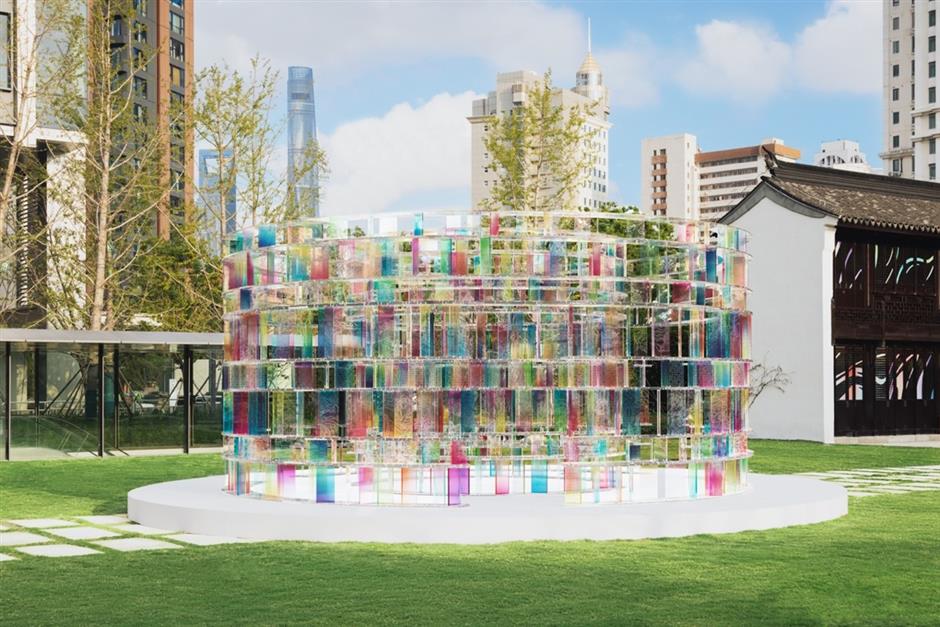
A modern art instillation is featured in front of the historic Tianhou Palace.
Rows of century-old buildings along the Suzhou Creek have been restored and repurposed, in the city's new urban renewal project.
The newly renovated Tianhou Palace, the city's biggest temple to Mazu (the goddess of the sea), and Shenyuli, one of the city's best-preserved shikumen (stone-gate) neighborhoods, have taken on a new life. Transformed into showrooms and boutiques, it's part of the newly opened Shanghai Suhewan MIXC World in downtown Jing'an District.
Tucked away in midst of a concrete jungle, the wood-brick structures have found a unique place in their surroundings.
They've also joined a row of historic buildings, like the former Chamber of Commerce and the Sihang Warehouse Battle Memorial, lining the Suzhou Creek waterfront with a succession of new attractions.
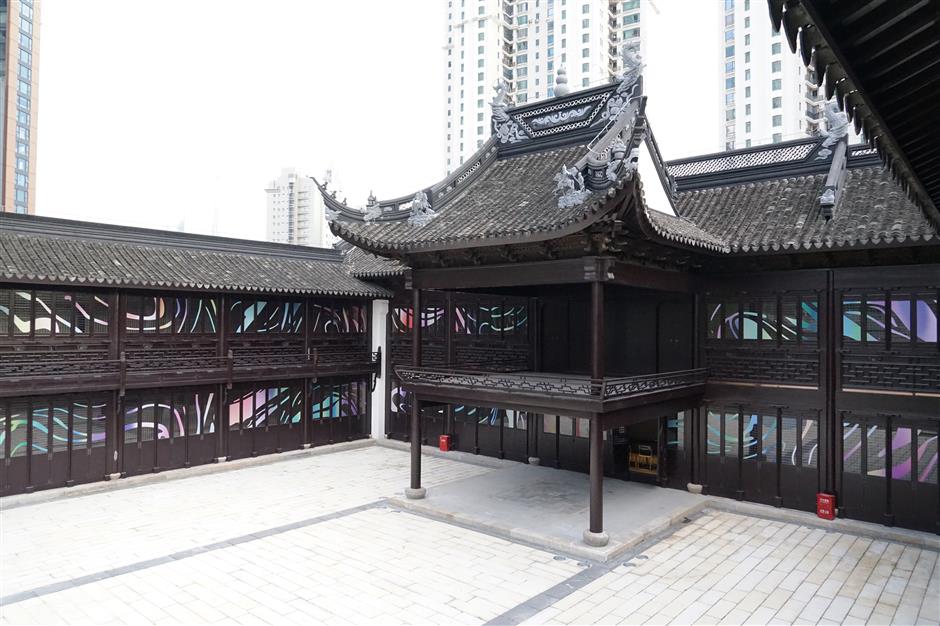 Zhu Xuanli
Zhu XuanliTianhou Palace is set to be a new landmark along the Suzhou Creek.
The history of Tianhou Palace can be traced back to the late 19th century. However, over the years, it was used as a hospital, school and residences, before being left vacant. The temple's main hall was eventually relocated to Songjiang District, over 40 kilometers away in the 1980s.
Luckily, it survived the demolition, and more importantly, the original components and materials of the buildings were saved for the renovation. Thanks to that foresight, the former glory of the temple has been revived today.
Renowned architect Cao Yongkang, who was responsible for the renovation, told Shanghai Daily that his team had spent a lot of time reassembling the several thousand components. The process was a complex puzzle, requiring scaling, photographing and comparison.
After six years of research, design and renovation, the temple was restored with over 2,600 original wooden and brick components, reviving its original aesthetic and classic architecture.
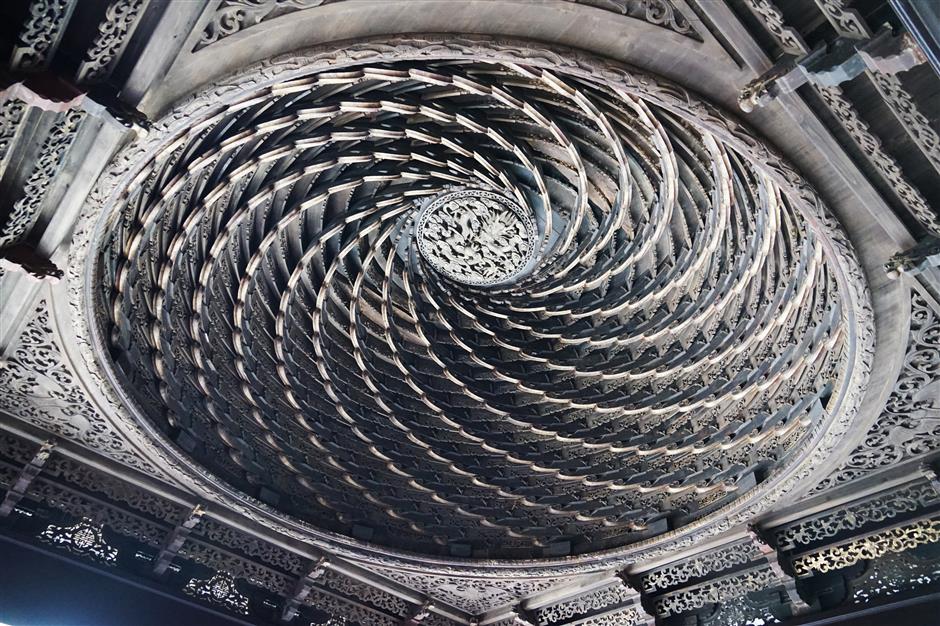 Zhu Xuanli
Zhu XuanliThe temple's spiral caisson ceiling of its ancient opera stage, is renovated with the help of 3D modeling.
In particular, the spiral caisson ceiling of its ancient opera stage was renovated with the help of 3D modeling, which according to Cao, was very challenging.
Cao, also director of the International Research Center for Architectural Heritage Conservation at Shanghai Jiao Tong University, believed that the renovation of Tianhou Palace would provide an insight into the brilliance of ancient Chinese architecture through its detailed decorative patterns and tile carvings.
"Tianhou Palace is a remarkable example of architecture in Shanghai, and of great historical and academic value", said Cao. "Worshipping the goddess of the sea, at the time was tied to the prosperity of the city and the importance of its harbors."
 Li Qian / SHINE
Li Qian / SHINEThe renovated Shenyuli neighborhood
While the temple is not yet open to the public, it may be developed into a venue for fashion shows and cultural events in the future.
The nearby Shenyuli, built in the 1930s, has also been restored to its original look with traditional craftsmanship.
The color, size and texture of its bricks are entirely based on its original materials. Notably, one of the eight buildings was built with 30,000 original bricks and other parts recouped from dismantled buildings in 2012.
"A city's urban renewal projects should always take the protection of its heritage sites into consideration,"Cao added. "All these sites are integral parts of the city's cultural and historical charm."
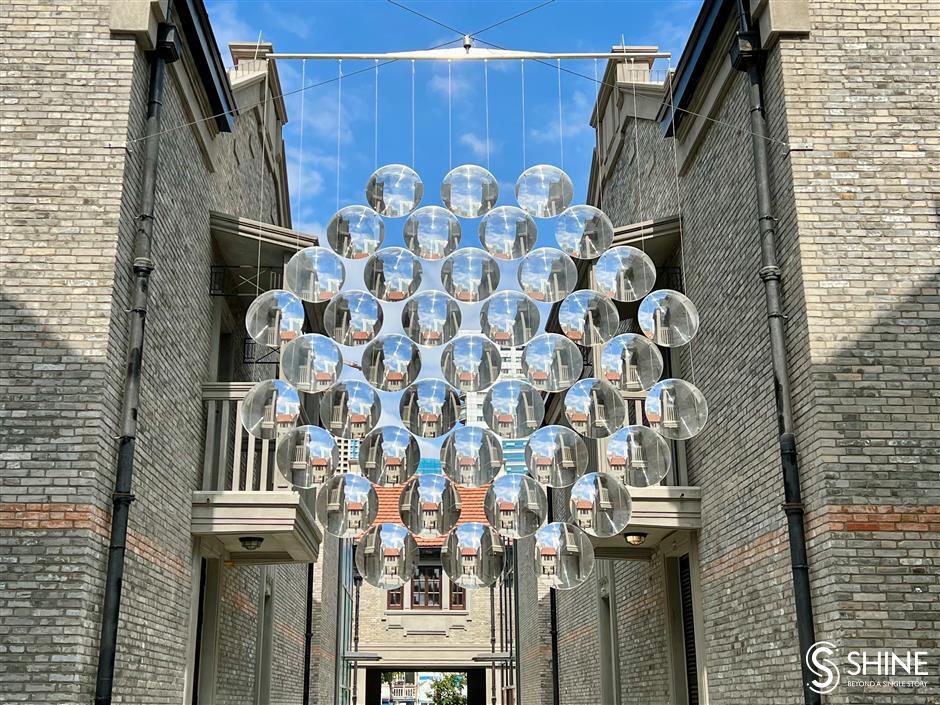 Li Qian / SHINE
Li Qian / SHINEA modern art installation is hung in between historic buildings in Shenyuli.
Shanghai Suhewan MIXC World takes a new approach to the integration of commerce and urban renewal.
It provides a subtle blend of historic charm and modern amenities, as well as introduces extensive vegetation, like lawns and floral landscapes, with art installations to invigorate the environment.
In particular, Germany-based artist collective Inges Idee is presenting two suites of giant sculptures, "Family Orchestra" and "Up We Go!," hailed as its first large-scale permanent outdoor installations in Shanghai, making art more accessible in public spaces.
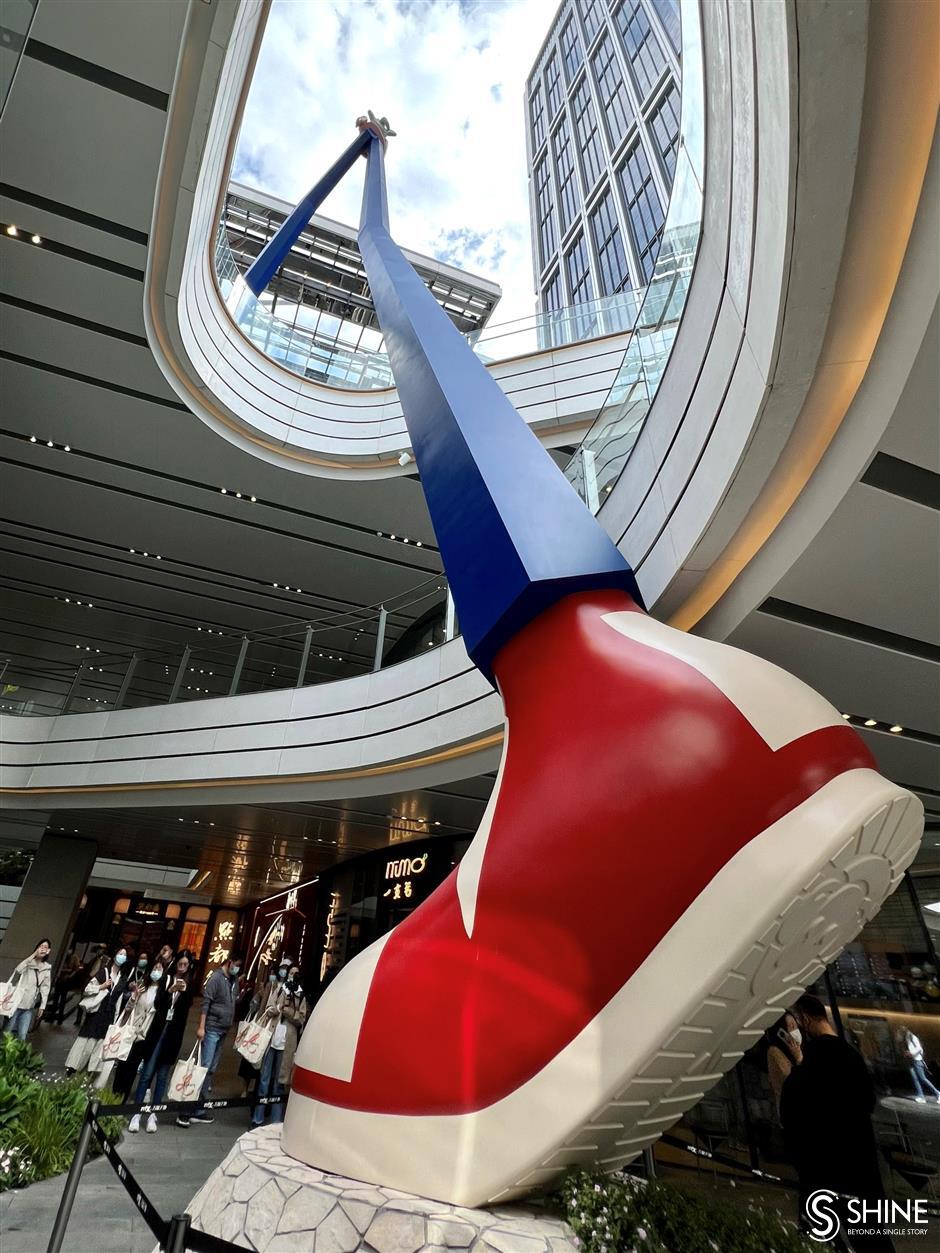 Li Qian / SHINE
Li Qian / SHINEThe instillation "Up We Go!" is on display.
Meanwhile, the curtain has been raised on an exhibition of public art installations, a joint effort of the commercial complex and UCCA Edge.
Artwork is presented in public spaces, recording the historic changes to the city and arousing nostalgia and memories. The Suzhou Creek and shikumen buildings have also inspired immersive digital art installations that showcase vivid local lifestyles through different periods of time.
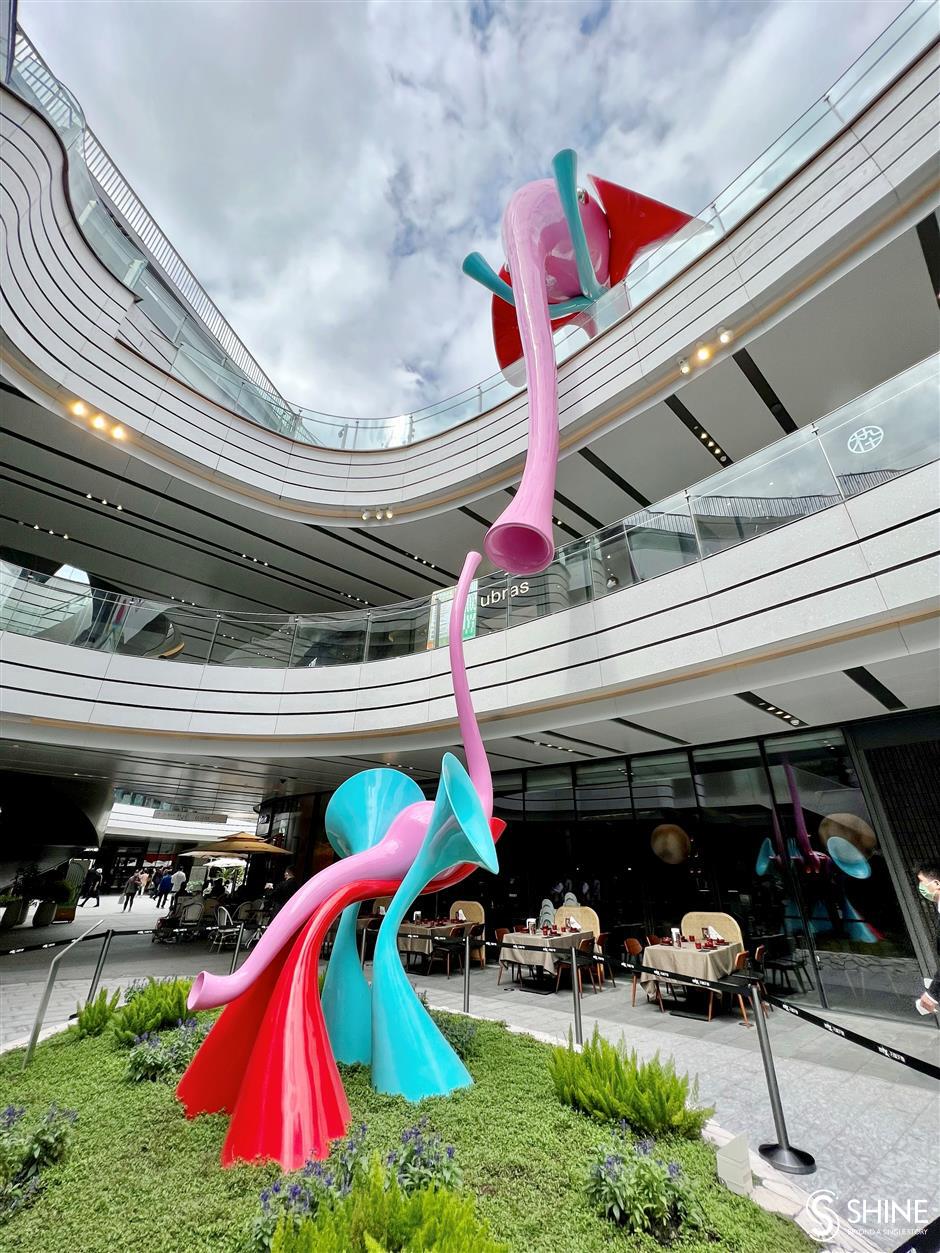 Li Qian / SHINE
Li Qian / SHINEThe instillation "Family Orchestra"
